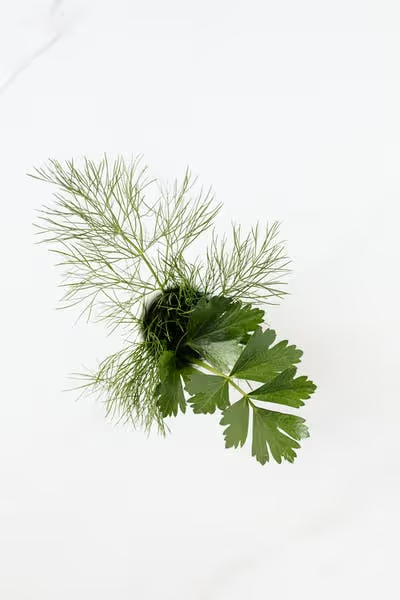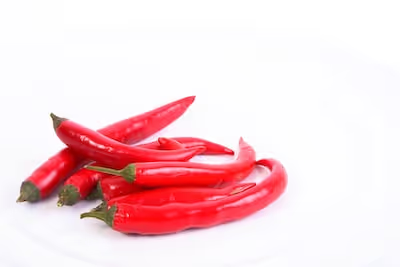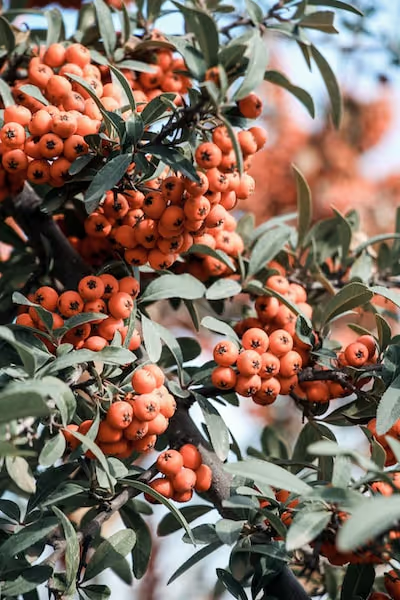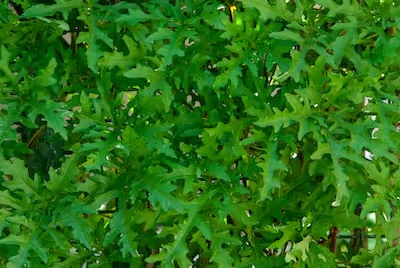Growing Gooseberry at Home: A Simple Step-by-Step Tutorial

Growing Gooseberry
Growing gooseberry at home rewards gardeners with tart, juicy berries perfect for pies and jams. Hardy, productive, and easy to handle, gooseberries thrive in cooler climates and can tolerate partial shade. This step-by-step tutorial simplifies growing gooseberry, from planting bare-root bushes to pruning for maximum yield—keep reading to get your bushes flourishing.
Cheatsheet: Homegrown Gooseberry Made Effortless
🌱 Choose Variety & Location
Pick mildew-resistant types for best results—e.g., Invicta or Hinnonmaki Red. Gooseberries thrive in full sun, but tolerate part shade. Soil: Well-drained, loamy, pH 6–6.5.
🧰 Tools and Products You’ll Need
- Pruners
- Gloves
- Mulch
- Organic compost
- Balanced fertilizer (10-10-10)
- Garden fork or spade
- Young gooseberry plant
🌿 Planting Steps
- Timing: Plant bare-root bushes Nov–Mar (USDA 3–8; 0–10°C/32–50°F).
- Dig hole 2x root ball width, enrich with compost.
- Set bush deep, cover base with 2 in (5 cm) soil.
- Mulch well; water deeply.
💧 Care & Maintenance
- Water weekly—1 in (2.5 cm) per week.
- Feed in early spring with balanced fertilizer.
- Add mulch yearly for moisture & weed control.
- Remove old wood each winter—boosts fruiting.
- Watch for sawfly larvae; handpick or use neem oil.
🍒 Harvest & Enjoy
- Pick green for tarts/jams; wait for full color for sweeter eating (June–July).
- Store fresh up to 2 weeks in fridge.
- Rich in vitamin C—1 cup covers 46% daily needs.
🌾 Self-Sufficiency Tip
One bush yields up to 8 lbs (3.6 kg). Plant two for steady supply.
-
Growing Gooseberry at Home: A Simple Step-by-Step Tutorial
Why I keep planting gooseberries
The fruit tastes like lime-kissed grape with a mischievous tang, and the shrubs earn their keep even in small yards. My oldest bush still drops 6 to 9 pounds per season, and I barely give it anything fancier than compost and a sharp pair of pruners.
Data that matters: average yields sit around 4 to 10 lb per mature bush 1.8 to 4.5 kg, and gooseberries deliver roughly 27 mg vitamin C per 100 g, per university extensions and USDA FoodData Central.
Sources I trust: Royal Horticultural Society, University of Minnesota Extension, Cornell CALS, and USDA FoodData Central. They line up closely with what I see in the garden.
Step 1: Pick the right cultivar
Growing Gooseberry starts with genetics, since disease resistance and thorn load change the whole experience. I grow a mix for flavor spread and risk management.
- Hinnomaki Red: dessert-sweet when ripe, tough skin, mildew tolerant, heavy spines.
- Hinnomaki Green: classic tart green berries for pies and jam, reliable in heat with afternoon shade.
- Invicta: vigorous, high yield, good mildew resistance, excellent for cooking or jam.
- Captivator: nearly thornless, good fresh eating, mildew resistant, a bit lighter yield here.
- Pax: thornless, red fruit, mildew resistant, easy to net and prune.
- Jeanne: late season, rich flavor, good mildew resistance, stretches the harvest window.
Check local rules on Ribes in the United States because some regions restrict planting due to white pine blister rust Cronartium ribicola. Your state extension will have current guidance.
Step 2: Site and soil prep
Full sun gives best cropping in cool climates, though in hot regions I give afternoon shade once temps sit above 85 F 29 C. USDA zones 3 to 8 suit most cultivars, and a slightly acidic soil pH 6.0 to 6.5 keeps nutrients available.
Work in 2 to 3 inches 5 to 8 cm of mature compost before planting, and consider raised beds for heavy clay. Space bushes 4 to 5 feet 1.2 to 1.5 m apart with 6 feet 1.8 m between rows for airflow.
Step 3: Planting bare-root or potted
Plant bare-root stock in late fall after leaf drop or very early spring while dormant, and plant containers any time the ground is workable. Set the plant so the previous soil line is at grade, water 2 to 3 gallons 8 to 12 L to settle, then mulch 2 to 3 inches 5 to 8 cm while keeping mulch a hand’s width off the stems.
If grafted, sink the union 1 inch 2.5 cm below the surface to encourage a stable framework. I trim any weak or damaged roots and soak bare roots in water for 30 minutes before planting.
Step 4: Training and pruning that actually works
I favor an open goblet for bush plants, and cordons on a single wire for tight spaces or containers. Good airflow keeps American gooseberry mildew Podosphaera mors-uvae from throwing a party.
- Year 1 winter: head the main stem to 8 to 10 inches 20 to 25 cm, keeping 3 to 5 strong buds facing outward.
- Year 2 winter: select 6 to 8 main shoots to form the bowl, remove anything crossing or low, and keep the center airy.
- Summer each year: shorten new side shoots to about 5 leaves 10 to 12 cm to build fruiting spurs and manage vigor.
- Year 3 onward, winter: maintain 8 to 12 framework branches, remove one or two of the oldest stems at the base each year to renew, and cut out any mildewed tips to clean wood.
Fruit comes best on one to three year old wood, so steady renewal beats heroic chopping. Wear stout gloves, the spines mean business.
Step 5: Water and feeding
Target about 1 inch 25 mm of water per week, more during fruit swell or heat spikes, and I prefer drip lines for steady moisture. Keep the root zone cool with organic mulch, since dry swings invite small fruit and mildew.
Each spring I broadcast a balanced organic fertilizer, roughly 1 cup of 5-5-5 per plant about 100 g, and scratch in a handful of sulfate of potash where soil tests show low K. Avoid heavy nitrogen or you get lush shoots and fewer berries.
Step 6: Containers done right
Go up to 10 to 15 gallons 38 to 57 L with a 16 to 20 inch 40 to 50 cm diameter pot, and use a chunky, peat-free mix with 30 percent bark and 10 percent perlite for drainage. Train as a single or double cordon on a bamboo cane to keep it tidy.
Feed lightly but regularly from spring through early summer, and water deeply since pots dry fast in wind. I set containers on pot feet to keep roots from sitting wet after storms.
Step 7: Pest and disease playbook
- American gooseberry mildew Podosphaera mors-uvae: white felt on tips and fruit that browns and cracks, prune out infected shoots and keep a breezy canopy, grow resistant cultivars like Invicta, Captivator, and Pax, and consider sulfur in early season if pressure stays high.
- Gooseberry sawfly Nematus ribesii and kin: larvae can strip leaves in days, scout starting in spring, hand-pick or use Bacillus thuringiensis kurstaki while larvae are small, and keep weeds down under shrubs.
- Aphids: curled leaves on tips and sooty mold, blast with water, release or conserve predators, or use insecticidal soap on cool mornings.
- Currant fruit fly Epochra canadensis: soft, infested fruit before ripening, clean up fallen fruit, consider yellow sticky cards for monitoring, and net early.
- Birds: hang fruit seems like a neon sign, so I net with 0.5 inch 13 mm mesh before blush and pin it to the ground.
- White pine blister rust: check local guidance near five-needle pines, and choose resistant cultivars where recommended by your extension.
I lost an entire June crop to sawfly once, and the fix was simple scouting plus Bt at first hatch the next year. Since then, zero drama.
Step 8: Thinning, harvest, and flavor timing
Thin clusters early to three fruits for size on heavy sets, a fast tweak that pays at the bowl. Pick underripe green berries for tart pies, then let the rest color and soften for dessert quality.
Harvest gently with thin gloves, and chill unwashed fruit right away. They hold 7 to 10 days in the fridge, or freeze on a tray then bag for winter bakes.
Step 9: Propagation that takes
Hardwood cuttings in late fall are nearly foolproof: take 8 to 12 inch 20 to 30 cm pencil-thick sticks, leave two buds above soil, and plant two thirds deep in a sheltered bed. Keep evenly moist and you will have new plants by spring.
Tip layering works too, which is basically pegging a low shoot, nicking the underside, and burying it 2 inches 5 cm. Cut free once rooted.
Top picks and quick comparisons
- Best for heat with afternoon shade: Hinnomaki Green, Pax.
- Best for jam and pies: Invicta, Hinnomaki Green, Jeanne.
- Best near thorn-averse kids and pets: Captivator, Pax.
- Best for containers and cordons: Captivator, Hinnomaki Red.
- Best disease package: Invicta, Captivator, Pax, Jeanne.
Soil, light, and climate cheatsheet
- pH target: 6.0 to 6.5, add elemental sulfur to lower or lime to raise per soil test.
- Sun: full sun in cool summers, morning sun plus afternoon shade where summer highs sit over 90 F 32 C.
- Spacing: 4 to 5 ft 1.2 to 1.5 m per bush, rows 6 ft 1.8 m.
- Water: 1 inch 25 mm weekly, more during fruit swell.
What to buy: plants, gear, and inputs
Choose certified disease-free plants from reputable nurseries, and I prefer one or two year old bare-root for rapid establishment. In the U.S., look for specialist fruit nurseries with strong Ribes selections, and in the U.K., pick RHS-listed suppliers.
- Tools: bypass pruners, small pruning saw, leather gloves, soft tie, berry netting, and a soil knife for weeding.
- Inputs: mature compost, balanced organic fertilizer 5-5-5, sulfate of potash if K is low, elemental sulfur for pH tweaks, Bt for sawfly, insecticidal soap, sulfur for mildew, and quality mulch.
Problem solver
- Tiny berries: overcrop or drought, thin clusters and water more consistently.
- Powdery coating on tips: American gooseberry mildew, prune and improve airflow, grow resistant cultivars, consider sulfur early.
- Leaves vanish overnight: sawfly larvae, scout often and use Bt immediately.
- Leaves curl and feel sticky: aphids, rinse off and apply soap or conserve predators.
- Sunburnt fruit on south side: give afternoon shade or use a light row cover during heat spikes.
A few bite-sized facts to keep handy
“Gooseberries prefer a cool root run, steady moisture, and airy canopies: give them that and they will feed you for decades.”
That matches guidance from the Royal Horticultural Society and Cornell’s berry specialists, and it tracks with every plant in my row. Growing Gooseberry is simple work done on time, not hard work done late.
References and further reading
Royal Horticultural Society: Gooseberries, cultivation and pruning guides. University of Minnesota Extension: Growing currants and gooseberries. Cornell CALS: Berry diagnostic resources and mildew management notes. USDA FoodData Central: nutrient profile for European gooseberry Ribes uva-crispa.
Frequently Asked Questions about Growing Gooseberry at Home
When should I plant gooseberry bushes?
Plant gooseberry bushes in autumn or early spring, ideally when the soil is workable but plants remain dormant. Late March to early April or October to November tend to provide optimal planting conditions.
What type of soil suits gooseberry growth best?
Gooseberries thrive in slightly acidic to neutral soil, with a preferred pH between 6.0 and 6.8. Choose well-drained, fertile soil enriched with organic compost to promote healthy development.
How much sunlight do gooseberry bushes require?
To flourish, gooseberry plants require full sun, meaning at least 6 hours of direct sunlight daily. They can tolerate partial shade, but berry production may decrease in shaded locations.
How deep and far apart should gooseberry bushes be planted?
Dig planting holes deep and wide enough to accommodate the roots comfortably, typically around 16 inches (40 cm) deep and wide. Space bushes approximately 4 to 5 feet (120 to 150 cm) apart, allowing ample room for growth and airflow.
How often should gooseberries be watered?
Maintain consistent moisture by providing approximately 1 to 1.5 inches (2.5 to 4 cm) of water weekly, especially during budding and berry-forming stages. Ensure good drainage to prevent root rot and disease.
How should gooseberries be pruned?
Prune gooseberry bushes annually in late winter or early spring. Remove dead, diseased, or crowded branches to encourage airflow, reduce disease risk, and improve berry production. Aim for an open, vase-shaped structure.
How do I recognize and address common gooseberry pests?
Typical pests affecting gooseberries include aphids, sawfly larvae, and gooseberry mildew. Regular inspections help detect pests early. Treat infestations with natural solutions like insecticidal soap or horticultural oils, and ensure proper pruning to improve airflow and reduce mildew risk.
When and how do I harvest gooseberries?
Harvest gooseberries from early to mid-summer, approximately 60-80 days after flowering. Pick berries gently when firm and fully colored. Wear gloves to protect your hands from thorny branches while harvesting.
Can gooseberries tolerate cold climates?
Yes, gooseberry bushes tolerate cold weather well and thrive in USDA hardiness zones 3 to 8. They withstand winter temperatures as low as -40°F (-40°C) and prefer cooler climates for optimal fruiting.
Do gooseberry bushes require fertilizer?
Feed gooseberry plants annually each spring with a balanced organic fertilizer rich in nitrogen and potassium. Apply a thin layer of compost or well-rotted manure around the base, keeping fertilizer away from the stem to prevent burning.
Growing Gooseberry rewards patience, steady hands, and a willingness to get a little dirt under your nails. These tangled, thorny shrubs pack more than their fair share of attitude but respond to reliable watering, sharp pruning, and sun-drenched days. Stick to well-drained soil and keep an eye out for pests, and you'll be rewarded with tangy fruit that tastes like summer distilled. At its best, a gooseberry bush is both workhorse and showpiece—versatile enough for the border, yet bold enough to stand alone.
If you're hungry for more plants that thrive on grit and patience, you might get a kick out of growing salal—another tough survivor with its own wild charm. But growing gooseberry? It's simple, honest work with sweet rewards. Do the basics right, and your shrubs will pay you back in fruit and old-fashioned garden pride.
The Homesteader's Take on Growing Gooseberries
Food Security & Self-Sufficiency Benefits
- Reliable Yield: One mature gooseberry bush yields 8-10 lbs (3.6-4.5 kg) annually, enhancing home fruit stocks.
- Preservation Friendly: Can easily preserve as jams, jellies, dried fruit, or frozen berries for year-round consumption.
- Low-Maintenance Crop: Minimal attention, resistant to common pests, and thrives in various climates, ideal for sustainable homesteading.
Health & Nutritional Highlights
Gooseberries contain high levels of Vitamin C (41 mg per 100 g), antioxidants, and dietary fiber, beneficial for immune support and digestive health.
Companion Planting Strategies
- Beans & Peas: Nitrogen-fixing plants like beans and peas improve soil fertility around gooseberry bushes.
- Garlic & Chives: Deters pests and fungus, offering natural pest control.
- Mint & Marigolds: Repel insects and attract beneficial pollinators to boost fruit yield.
Sustainable Pruning & Propagation Practices
Regularly prune older stems and use hardwood cuttings for propagation, ensuring vigorous plants without extra investment.
Integrating Gooseberries into Permaculture Designs
- Food Forest Layering: Effective placement as mid-layer shrub, maximizing vertical space and complementing other edible plants.
- Soil Conservation: Gooseberry bushes stabilize slopes, reducing soil erosion while producing food.
Find out which plants will thrive in your garden!
Answer a few fun questions and get custom plant recommendations perfect for your space. Let’s grow something amazing together!

start your season





